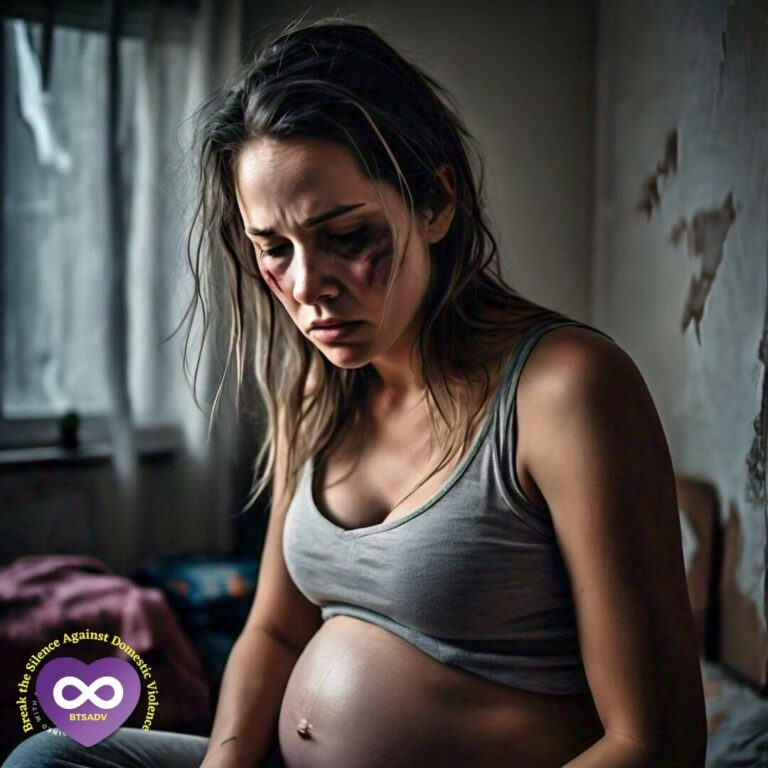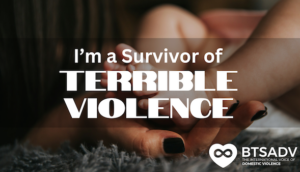Pregnancy-related domestic violence is a serious public health issue. While there’s a growing
amount of research on the subject, there are still plenty of unanswered questions regarding the
prevalence of the type of victimization, the risk factors associated, and the consequences. In a
study published by the Journal of the College of Physicians and Surgeons of Pakistan, they
interviewed four hundred and ten pregnant patients. With factors associated with addiction in 32
patients (39%), aggressive nature of husband in 21 (25.6%), and unemployment of husband in 6
(7.31%) cases. Overall, 52% of the pregnant women had been victims of more than one form of
violence. One of the more significant symptoms had been depression, which was identified in
29.2%. Pregnancy does not make women “less vulnerable” to violence than non-pregnant men or
women. Pregnancy provides an opportunity for abuse but also provides them with more frequent
assessments due to frequent OB/GYN appointments. According to the World Health
Organization in 2002, 10-69% of women from 48 different countries were being physically hit
by their partners in their lives (Zareen et al., 2009).
The United Kingdom Department of Health also describes domestic violence as very similar to
how the United States justice system, with forced pregnancy, abortion, and sterilization included
as different forms of violence, experienced by men and women at the hands of their partners
(Zareen et al., 2009). In several studies, there have been reports of positive associations for
perinatal death, and Covington et al. found positive associations for fetal death or neonatal death.
It’s also worthied to note that women who’ve experienced violence during pregnancy are more
likely to have physical disorders, depression, and anxiety. Maternal death due to psychiatric
disorders is common worldwide, and depression during pregnancy and postpartum periods
remains the least recognized complication of childbearing, with tragic outcomes for the family
and society (Zareen et al., 2009).
Violence against women has devastating effects on women’s sexual and reproductive health and
systematically moves on to affect the health of their newborns, toddlers, children, and teens.
Such behavior seems to be rooted in gender inequality. It’s possible that the violence could start
or escalate during pregnancy. Out of pregnancy, the most common physical injuries experienced
are to the head and neck (40%) followed by musculoskeletal injuries (28%). Pregnancy may alter
the pattern of assault, with pregnant women more likely to be struck on the abdomen or have
multiple sites of injury. 34% of abused pregnant women also reported being strangled. Pregnant
women who have experienced domestic violence have been found to have a 37% higher risk of
obstetric complications that warrant antenatal admission, for example, high blood pressure
(hypertension), premature rupture of membranes, and anemia (low iron levels which can lead to
bruising). A larger study in the United States found that women reporting domestic violence
before or during pregnancy were at higher risk of hypertension, swelling, vaginal bleeding,
vomiting, dehydration, and urinary tract infections as well as the most significant being pre-term
delivery of the baby. In a different review of evidence of an association between domestic
violence and pregnancy outcome found that abused pregnant mothers gain less weight during
pregnancy and are more likely to undergo operative delivery than non-abused mothers. In 2003-
2005, 23% of UK maternal deaths had features of domestic abuse (Cook & Bewley, 2008).
In combination with the physical and medical factors listed above, there are some significant
psychological factors to consider as well. In a small survey in America, it was discovered that
34% of the respondents reported that their abusive partners had limited their ability to decide
whether to have children. Women stated they felt pressured or forced to conceive or have
abortions; some also underwent sterilization in response to the abuse. Some women reported
inconsistent behavior in their intimate partners which included not allowing them to use
contraception and then later demanding an abortion. There is an obvious emphasis on controlling
the woman’s reproductive choices as opposed to attaining a specific end (Cook & Bewley, 2008).
Giving birth to our children doesn’t mean that the domestic violence ends. Women who reported
domestic violence occurring during pregnancy were significantly less likely to breastfeed their
babies. After being subjected to months or years of verbal abuse, women may lack confidence or
feel discouraged or worse– forbidden from nursing their children. Family violence after the baby
has been born can also cause physical and emotional harm to children and young people such as
poor ability to socialize with peers, increased irritability, difficulty making friends, being bullied,
having anxiety and depression, sleeping problems, eating problems, stomach ages, self-harm,
difficulty concentrating, and educational barriers.
Efforts to effectively prevent the initiation of IPV should focus on healthy relationships across
the lifespan, with an emphasis on children and youth. Programs and policies must be better
developed that are culturally based and responsive to those populations at greatest risk. The
causes of IPV can be complex but it’s important to find diverse ways from professional
perspectives as well as increase communal participation in trauma-informed educational
opportunities.
Recommendation:
Findings authors and research teams recommended that all professionals including nurses,
obstetricians, physicians, and psychologists must be educated about this issue and should be
trained to identify the problem. Continuous research is required to ensure a fuller and more
complete understanding of the problem and to be able to create solutions.
Sources:
Alhusen, J. L., Ray, E., Sharps, P., & Bullock, L. (2015). Intimate Partner Violence During
Pregnancy: Maternal and Neonatal Outcomes. Journal of Women’s Health, 24(1),
100–106. https://www.ncbi.nlm.nih.gov/pmc/articles/PMC4361157/
Cook, J., & Bewley, S. (2008). Acknowledging a persistent truth: Domestic violence in
pregnancy. Journal of the Royal Society of Medicine, 101(7), 358–363.
https://doi.org/10.1258/jrsm.2008.080002
Zareen, N., Majid, N., Naqvi, S., Saboohi, S., & Fatima, H. (2009). Effect of Domestic Violence
on Pregnancy Outcome. Journal of the College of Physicians and Surgeons
Pakistan, 19(5), 291–296.










